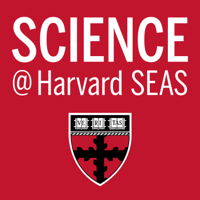
Science@SEAS Podcast
1) Research bits: Engineering Birdsongs
SEAS researchers developed a simple device that mimics complex birdsongs.
2) Slow climate mode reconciles historical and model-based estimates of climate sensitivity
SEAS researchers Peter Huybers and Cristian Proistosescu resolved a major conflict in estimates of how much the Earth will warm in response to a doubling of carbon dioxide in the atmosphere.
3) The uncertain future of energy and climate
Professor Michael McElroy discusses a world without fossil fuels, the economics of changing energy systems and the impact Donald Trump may have on the future of energy and climate.
4) Superconductivity vs. Spintronics
Applied physicist Hechen Ren joins the podcast to discuss the title of her paper, "Controlled Finite Momentum Pairing and Spatially Varying Order Parameter in Proximitized HgTe Quantum Wells." It gets...Show More
5) AI and Life in 2030
Tackling the ethical and legal quandaries of artificial intelligence with AI pioneer and SEAS professor Barbara Grosz.
6) Multilayer Dielectric Elastomers for Fast, Programmable Actuation without Prestretch
Electrically powered, artificial muscles that are easy to make
Multilayer Dielectric Elastomers for Fast, Programmable Actuation without Prestretch
08:24 | Jul 20th, 2016
7) Evidence of a first-order phase transition to metallic hydrogen
We may have glimpsed liquid hydrogen abruptly changing into metallic hydrogen, which is the same stuff in the core of Jupiter.
8) Functional network inference of the suprachiasmatic nucleus
A slightly sloppy, first attempt to explain how neurons in the region of the brain that controls circadian rhythms talk to each other.
9) Metalenses at visible wavelengths: Diffraction-limited focusing and subwavelength resolution imaging
A flat lens that works in visible light and can focus light as small as nature allows.
10) Broadband and chiral binary dielectric meta-holograms
A very small hologram that can be used across all different wavelengths of light and can be programmed with different images based on the direction of light that works because it's made from a materia...Show More